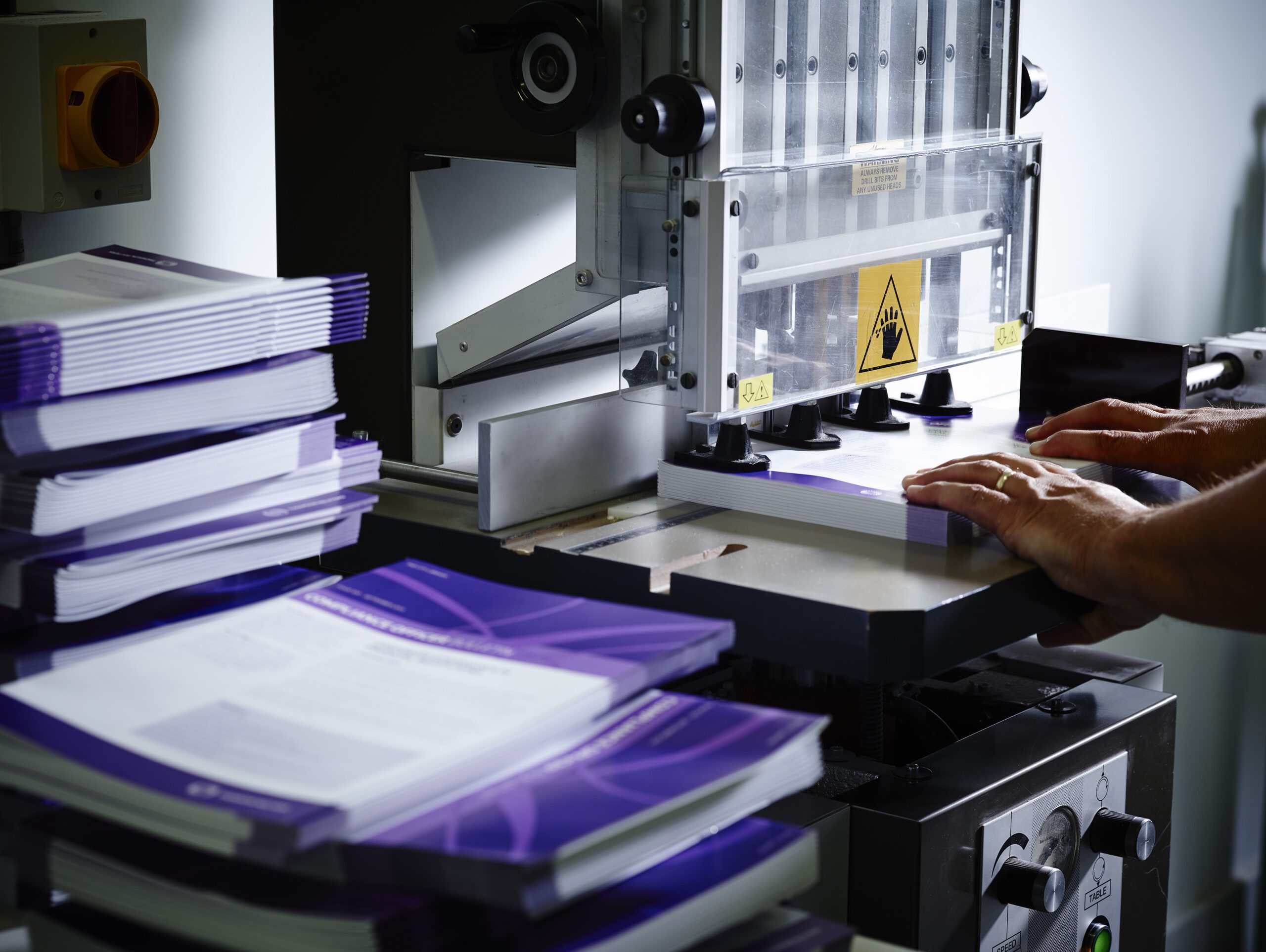In publishing, the tactile experience of a physical book holds a special place in the hearts of readers. Among the various formats available, paperback editions stand out for their affordability and accessibility, making the role of paperback book printers integral to the literary world. Behind this sensory delight is something often forgotten: the paper on which the words are written. The kind of paper used to print a book is not only a matter of taste but also of practicality, as it affects everything from how long the book lasts to how nice it looks. Let’s take a look into the complicated world of book printing paper, looking at its different types, things to think about, and effects on the environment.
Weight and Thickness of Paper: Something You Should Know
For paperback book printers, the selection of paper begins with considering weight and thickness. Paper weight, measured in grams per square meter (gsm) or pounds (lbs), directly influences the book’s feel and portability.
- Lightweight Paper (less than 50 gsm): This type of paper is often used in mass-market paperbacks because it is cheap and flexible but may not last as long or be as clear.
- Standard Paper (50-90 gsm): This is the workhorse of paperback book printers, striking a balance between weight, thickness, and cost. It works for a lot of different types of books and forms, from novels to textbooks.
- Heavyweight Paper (90-140 gsm): Reserved for premium editions, art books, or publications with extensive visual content, the heavyweight paper provides enhanced durability and opacity, ensuring that images and text do not bleed through.
- Cardstock (140 gsm or higher): This stiff and durable paper is mostly used for book covers, fillers, and special editions. It’s also a good base for images and decorations that need to stand out.
Coated vs. Uncoated Paper

Paperback book printers also have the choice between coated and uncoated paper. This decision impacts the book’s visual and tactile experience.
- Coated Paper: Coating clay or other chemicals gives coated paper its smooth, shiny surface. This coating makes colours look better, clearer pictures, and higher contrast. This makes it perfect for books with high-quality photos or images.
- Uncoated Paper: Uncoated paper doesn’t have a shiny finish like coated paper does, so it feels more natural and rough. It absorbs ink very well, so it’s good for books like stories and textbooks that need to be easily read and comfortable.
Paper Finish Options
Paper can have more than one surface, and each one gives it a different look and feel:
- Matte Finish: The surface of matte paper doesn’t reflect light, so it looks soft and classy. It’s often used for literary stories, poetry collections, and academic books.
- Glossy Finish: The shiny surface of glossy paper makes colours look more vivid, sharp, and contrasty. It’s often used for art books, magazines, and other publications with many pictures.
- Satin Finish: Satin paper has a sheen without the glare that comes with other finishes, like matte or shiny. It works for many books, from cookbooks to trip guides.
Considerations for Print Quality and Cost:
Paperback book printers must balance print quality and cost efficiency. The choice of paper impacts not only the aesthetics and feel of the book but also the budget.
- Print Quality: The type of paper you use has a big effect on print quality, changing things like how colours look, how clear the text is, and how sharp the images are. If publishers want to print very well, they can choose coated paper with either a shiny or matte finish.
- Price: Budget constraints are a reality for paperback book printers. Selecting a paper that meets quality expectations without inflating costs requires a deep understanding of materials and supplier options.
- Readers’ Preferences: Knowing what the target group wants is very important. People who like to read literary fiction might like how uncoated paper feels, while people who like to look at art might like how the bright colours and clear pictures look on coated paper.
Environmental Considerations

In a world that cares more and more about the environment, choosing sustainable book printing paper is important:
- Recycled Paper: Using recycled paper lowers the damage that printing books do to the earth by using waste already used. Many companies use recycled paper to meet their sustainability goals and lower their carbon footprint.
- FSC-Certified Paper: The Forest Stewardship Council (FSC) certifies that paper products come from forests that are handled well. Choosing FSC-certified paper shows you care about protecting the earth and caring for forests.
- Eco-Friendly Inks: Choosing eco-friendly, vegetable-based inks is another way to save the environment while writing a book. Printing with these inks gives off fewer volatile organic compounds (VOCs) because they are made from renewable materials.
Conclusion:
The decisions made by paperback book printers regarding paper selection are pivotal in shaping the reading experience. From the paper’s weight, coating, and finish to considerations around print quality, cost, and environmental impact, these choices reflect a deep commitment to delivering books that readers will cherish. By carefully navigating these considerations, paperback book printers ensure that each paperback book is not just a vessel for storytelling but a tactile, visual, and sustainable artefact that enriches the reading landscape.
Frequently Asked Questions:
-
How does paper weight affect paperback book printing?
Paperback book printers must consider paper weight because it affects thickness, durability, and feel. The paper’s weight, measured in gsm or lbs, determines whether the book feels heavy in the reader’s hands and how portable it is. Paperback book printers choose paperweights based on genre, audience preferences, and budget. For speciality editions or books with considerable visual material, stronger paperweights may be recommended for durability and opacity. In contrast, lighter weights are favoured for lengthy novels to make them compact and approachable.
-
Why is coated paper preferred for certain paperback books?
For certain paperback publications, coated paper has various advantages, including a smooth, glossy surface created by covering clay or other chemicals. Coated paper improves picture reproduction and colour vibrancy. Coated paper’s glossy texture produces clearer, more vibrant images, making it ideal for art, photography, and coffee table books. The coated paper also prevents smearing and fading, keeping the book looking good. Coated paper is less frequent in paperback books due to its reflectiveness and stiffness. Still, some printers may employ a light coating for speciality editions or publications prioritising image quality.
-
How do paperback book printers balance print quality and cost?
Paperback book printers must balance print quality and cost. Print quality depends on the material, printing process, and finishing. Paperback book printers must carefully consider these issues to satisfy quality and budget demands. A higher-quality paper may have crisper lettering and richer images, but it costs more. To cut costs without sacrificing quality, paperback book printers may tweak printing settings, optimise production methods, or negotiate with suppliers. Paperback book printers must balance print quality and cost to fulfil aesthetic and economic needs.
-
What environmental considerations guide paper selection for paperback book printing?
As environmental concerns grow, green paper is becoming more important to paperback book printers. Choose recycled paper from post-consumer waste to reduce virgin material use. Paperback book printers can conserve resources and reduce their environmental effect by using recycled paper. Selecting paper from FSC-certified responsibly managed forests is another environmentally friendly alternative. These certifications guarantee that the paper originates from responsibly harvested and maintained forests with stringent environmental and social requirements. Paperback book printers may use vegetable-based inks and energy-efficient production procedures to lower their carbon footprint and promote sustainability in the publishing sector.
-
What impact does paper finish have on the reading experience?
The paper finish of a paperback book affects its readability and appearance. Paperback book printers offer matte, glossy, and satin finishes, each with qualities. Literary fiction, poetry collections, and academic publications prioritising readability and comfort benefit from matte paper’s non-reflective surface and soft, elegant look. However, glossy paper boosts colour vibrancy and sharpness, making it perfect for publications featuring high-quality images or photographs. Satin paper is perfect for cookbooks, travel guides, and other genres that require a faint shine without the glare. Paperback book printers choose paper finishes depending on genre, aesthetics, and reader preferences to make each book visually appealing and pleasurable.



